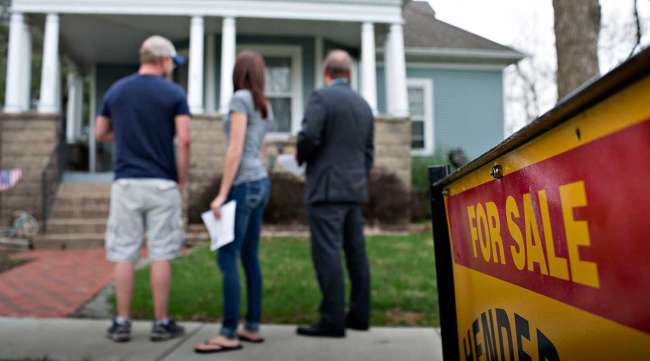Sales of Previously Owned Homes Decline to 11-Month Low

An unexpected decline in sales of previously owned U.S. homes last month to the lowest level since August 2016 indicates rising prices and lean inventories are impeding faster growth in the housing market, National Association of Realtors data showed on Aug. 24. The July figure was depressed by weakness in the Midwest and Northeast.
Highlights of July Existing-Home Sales
• Contract closings fell 1.3% month over month to a 5.44 million annual rate (estimated 5.55 million).
• Median sales price rose 6.2% year over year to $258,300.
• Inventory of available properties decreased 9% y/y to 1.92 million, marking the 26th consecutive year-on-year decline.
Key Takeaways
The housing market’s biggest hurdle remains a limited number of properties for sale because it’s keeping home-price growth above the pace of wage gains and leaving prospective buyers with fewer choices. Elevated prices are preventing some from becoming homeowners for the first time.
The slowdown follows data Wednesday that showed a decline in new-home sales, which are considered a timelier indicator though they account for only about 10% of the market. Such purchases are calculated when a contract is signed while existing home sales, which are calculated when a contract closes, account for the remaining 90% of the market.
The setback in July is unlikely to stop the housing recovery from continuing to make gradual progress on the heels of solid hiring and low borrowing costs.
Economist Views
“Just not enough homes are showing up — an inventory shortage,” Lawrence Yun, NAR’s chief economist, said at a press briefing accompanying the report. “Demand remains strong but the inventory shortage is the choke point.”
That’s keeping prices elevated. “There’s a continuing misalignment between home price growth and people’s income or wage growth,” he said.
Other Details
• July purchases declined 5.3% in the Midwest to a five-month low of 1.25 million at an annualized rate; sales slumped 14.5% in the Northeast.
• At the current pace, it would take 4.2 months to sell the homes on the market, compared with 4.8 months in July 2016; Realtors group considers less than a five months’ supply as consistent with a tight market
• Single-family home sales decreased 0.8% to an annual rate of 4.84 million.
• Purchases of condominium and co-op units dropped 4.8% to a 600,000 pace.
• First-time buyers made up 33% of all sales in July, compared with 32% the prior month; 40% is ‘normal’ share, NAR’s Yun says.
• Homes typically sold in 30 days, compared with 36 days in July 2016.
• 51% of homes sold in July were on market for less than a month.
With assistance by Kristy Scheuble




